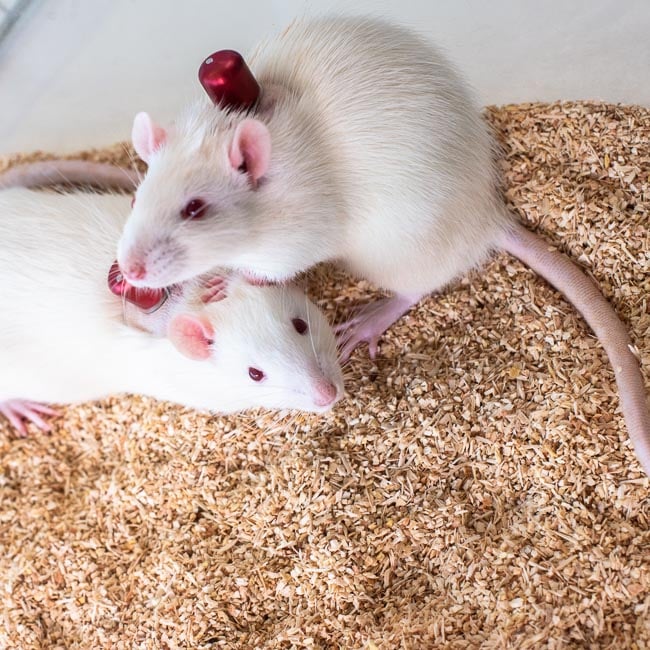 Catheterized rats and mice can be useful for a range of studies. Perhaps you need to inject a compound intravenously over several minutes or hours, even continuously—too long to restrain the animal for a tail vein injection. Perhaps you want to infuse directly into the stomach, or sample bile. Or perhaps you need nice clean blood samples without the stress caused by acute techniques, such as direct puncture of the tail, saphenous, sublingual or jugular veins, or retro-orbital bleeds.
Catheterized rats and mice can be useful for a range of studies. Perhaps you need to inject a compound intravenously over several minutes or hours, even continuously—too long to restrain the animal for a tail vein injection. Perhaps you want to infuse directly into the stomach, or sample bile. Or perhaps you need nice clean blood samples without the stress caused by acute techniques, such as direct puncture of the tail, saphenous, sublingual or jugular veins, or retro-orbital bleeds.
To do the surgeries in house you’ll need a trained surgeon with a steady hand, a dedicated surgical area with specialized surgical tools and microscopes, and SOPs that ensure aseptic technique. If it is a new procedure you will need the time and extra animals to practice. Resources are available to develop your in-house capabilities, such as the Instech Online Training Program, the René Remie Surgical Skills Centre in Europe and others, but unless you will need surgically-modified animals on a regular basis, this may not make sense for you.
Fortunately, in the US, Europe and Japan, several animal vendors offer catheterization as a surgical service. Their surgeons operate every day, which keeps their skills sharp. They often work in an assembly line which can minimize the amount of time the animal spends under anesthesia. They have dedicated surgical suites and operate under aseptic conditions. They also take the time to refine and optimize surgical procedures.
Pre-Catheterized Animals
There are three primary providers of surgically-modified rodents:
- Charles River Laboratories (CRL), the largest animal vendor worldwide, has surgical services operations in North Carolina, California, France, England and China. They offer a wide variety of procedures on rats, mice and other rodents, from the typical jugular vein, femoral vein and carotid artery catheterizations, to more specialized catheterizations such as cecum, gastric and intrathecal. We worked with them in a collaboration with Ferring Pharmaceuticals to develop the 2-channel rat Vascular Access Button™ for combined infusion and PK blood sampling. CRL has done its own research to optimize patency of mouse jugular vein catheters.
- Inotiv, another large rodent vendor with a strong presence in the US and Europe, has surgical services operations in Indiana, the UK and the Netherlands. They have long offered rat catheterizations and added mice several years ago. In 2012 we worked with Inotiv (Harlan at the time) to develop the PinPort™.
- The Jackson Laboratory is the leading global supplier of specialized mouse strains. They offer catheterization surgeries from their headquarters in Maine and a site in California. We worked with Jax to develop and refine several models of our mouse Vascular Access Buttons™.
Surgery can add significantly to the cost of an animal, typically about $200 for a standard jugular vein catheterization with a VAB. However, the animals will arrive recovered from surgery and ready to use after acclimation. Compared to the cost, time and space required to maintain surgical expertise in house, having your animal vendor perform catheterizations often makes financial sense.
Rent-a-Surgeon
 Another option, if you have the surgical facilities but not the staff, is to hire a surgeon to come on-site for a particular project. In the US some surgical service providers will offer this in certain circumstances, and in Europe there are several consultants that have made this their business.
Another option, if you have the surgical facilities but not the staff, is to hire a surgeon to come on-site for a particular project. In the US some surgical service providers will offer this in certain circumstances, and in Europe there are several consultants that have made this their business.
See our surgical services providers guide for links to both animal vendors and on-site surgical consultants.

